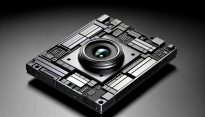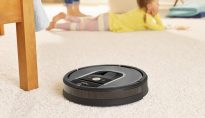Sony HDR-AS300 action camera review. No one else has it’s features
03.03.17
Sony HDR-AS300
Despite the widespread use of image stabilization systems in various photo and video cameras, action cameras are just beginning to receive such technologies .
Sony has always been one step ahead of its competitors in this regard. For several years now, Sony sports cameras have been equipped with electronic image stabilization. For example, GoPro only recently introduced electronic image stabilization in the HERO5.
And in the latest generation of Sony action cameras, which includes the Sony HDR-AS300 model under review and the more advanced FDR-X3000, optical stabilization has already appeared.
The presence of optical image stabilization on Sony HDR-AS300/FDR-X3000 cameras sets them apart from other models. Competitors cannot yet offer a similar function.
Sony HDR-AS300 was introduced in September 2016 along with the more advanced FDR-X3000. The cameras are very similar to each other, but the Sony HDR-AS300 has been slightly reduced in capabilities and made more attractive in price.
We list the main differences between the Sony HDR-AS300 and the FDR-X3000:
- no 4K video shooting;
- Full HD shooting mode (1920×1080 pixels) at 120 fps is not available;
- maximum data flow when shooting video is approximately 50 Mb/s, not 100 Mb/s.
For ordinary household use, the absence of the above functions is not at all critical, but advanced users may find them useful.
External inspection
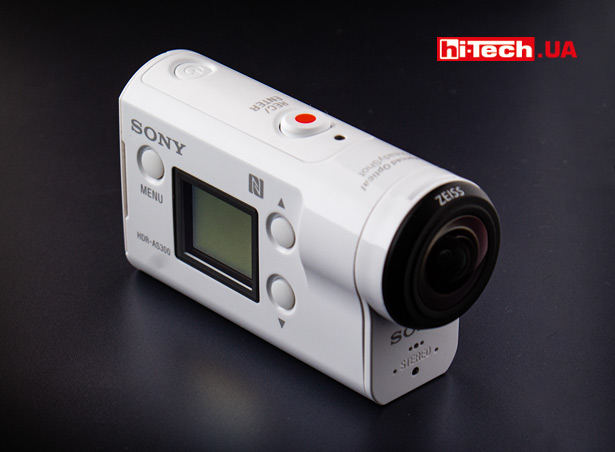
The HDR-AS300 looks pretty standard for Sony sports cameras. Pay attention to the form factor. The camera resembles a miniature video camera, while most action cameras, including GoPro models, resemble more of a small camera. It is quite difficult to say unequivocally which form factor is better. Sony cameras are better suited for use on a bike, while GoPro cameras are more comfortable when mounted on your chest.
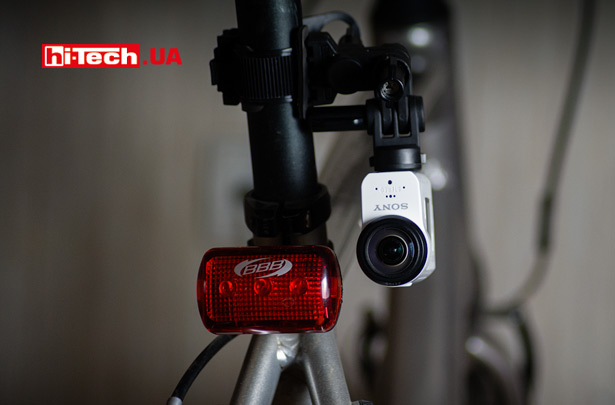

Users of Sony sports cameras will immediately notice that the included protective housing now has a flat lens glass rather than a convex one. The fact is that boxes with convex glass, while providing mechanical protection and waterproofness, are not suitable for shooting underwater. The image appears blurry. Previously, users of Sony action cameras for underwater shooting had to separately purchase a special attachment or a box with flat glass.
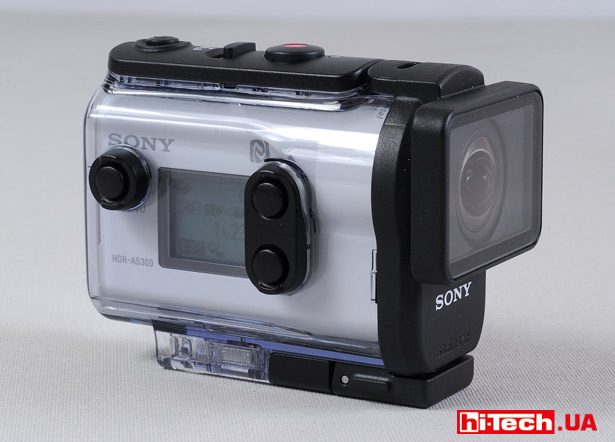
The Sony HDR-AS300 camera itself is splash-proof, and with the camera box you can dive to a depth of 60 m.
Traditionally, Sony action cameras use a standard tripod socket for mounting. Moreover, you can mount the camera both with the box and without it.
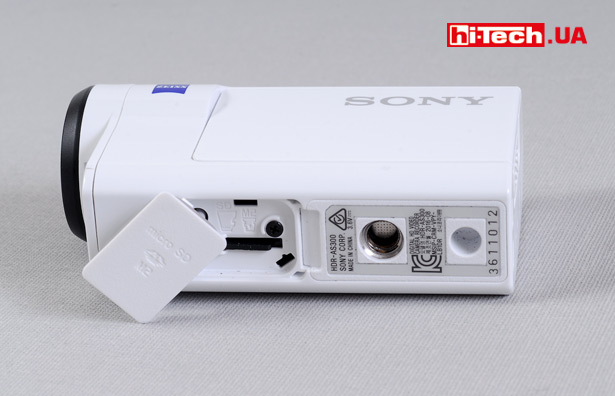
The bottom panel of the Sony HDR-AS300 houses a memory card slot and a mounting socket
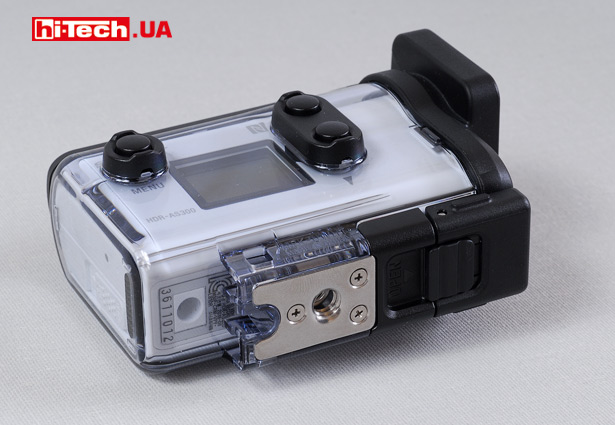
The shoe with a mounting socket looks solid. Surely it can withstand high loads
You can control the recording status using two information LEDs located on the back and top of the camera. If desired, the diodes can be turned off completely for hidden shooting :), or you can choose to have only the rear LED light up.
While GoPro has included a color touchscreen in its latest model, the GoPro HERO5, Sony still only uses a tiny monochrome LCD display on the body. In our opinion, this is the right decision, because color screens consume a lot of energy, which leads to a reduction in battery life.
The HDR-AS300’s small information display is absolutely enough to configure the camera and display important device status parameters.
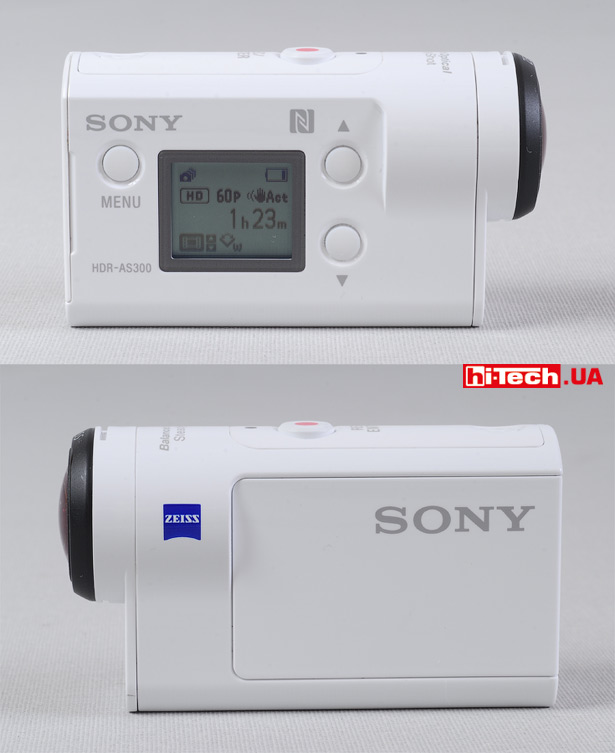
If you need to control the resulting image, you can always connect a smartphone (based on Android or iOS) or use the included remote control with a built-in color screen.
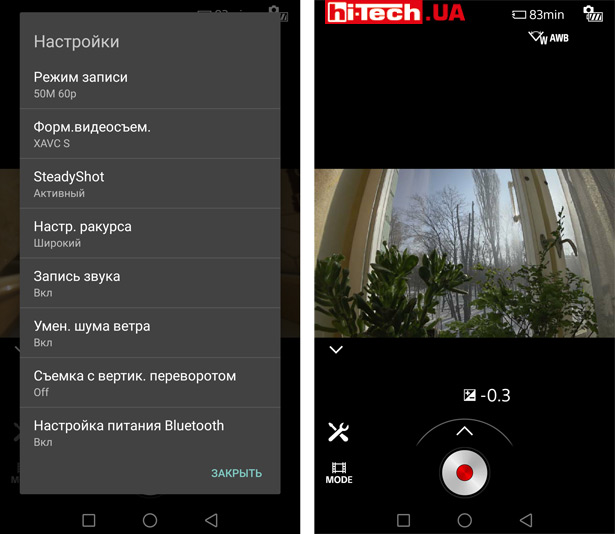
Control and configuration of Sony HDR-AS300 from a smartphone (proprietary PlayMemories Mobile application)
The remote control turned out to be very interesting, and I would like to mention it separately.
Control and remote
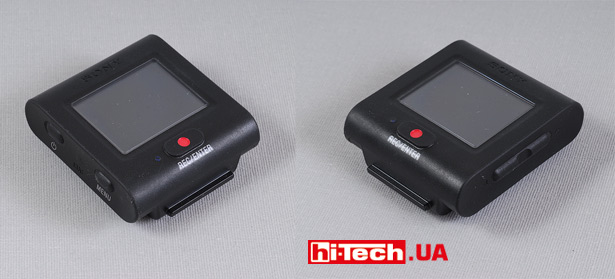
In our case, the Sony HDR-AS300 camera comes with the RM-LVR3 remote control. There are also delivery options without this remote control.
The remote control duplicates absolutely all the settings available on the camera itself. In addition, the image captured by the camera is displayed on its screen.
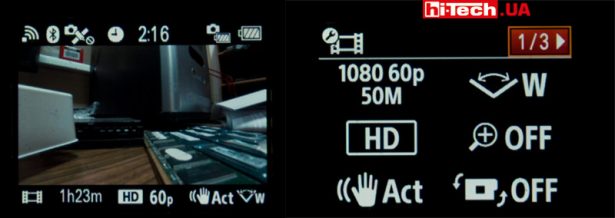
To connect the remote control, Wi-Fi and Bluetooth wireless interfaces are used. Video transmission to the remote control screen and camera control occurs via a Wi-Fi connection. And Bluetooth seems to be necessary to implement the ability to turn on the camera from the remote control and save battery power.
When turned off, the camera’s relatively power-hungry Wi-Fi module is turned off, while the energy-efficient Bluetooth module remains on. When a command is sent from the remote control via the Bluetooth channel to turn on, the camera turns on, its Wi-Fi module is activated and a Wi-Fi connection between the camera and the remote control is established.
Without Bluetooth, to be able to turn on the Sony HDR-AS300 from the remote control, the Wi-Fi module would have to be left on.
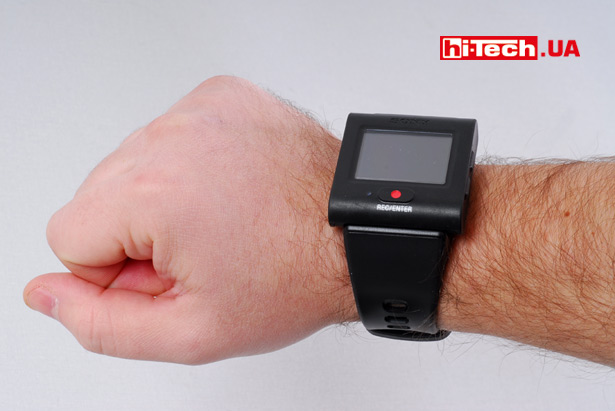
The RM-LVR3 remote control itself is quite compact. It comes with a wrist strap. With it, this remote control can be worn like a watch.
The image quality on the remote control screen is not bad, but you should not expect the picture level of the screens of modern smartphones. The resolution and viewing angles here are noticeably more modest.
The remote control buttons turned out to be quite tight. There may be discomfort when using gloves.

If desired, hang the Sony RM-LVR3 remote control on a lanyard or attach it to any holder with a standard tripod mount. A special holder is included for this purpose.
If desired, you can synchronize several Sony cameras with the remote control at once. By the way, we’re not just talking about Sony action cameras. These could be mirrorless cameras, compact cameras, etc.
Shooting
You can start shooting, even when the camera is turned off, with just one press of the record button. This is relevant for such a camera.
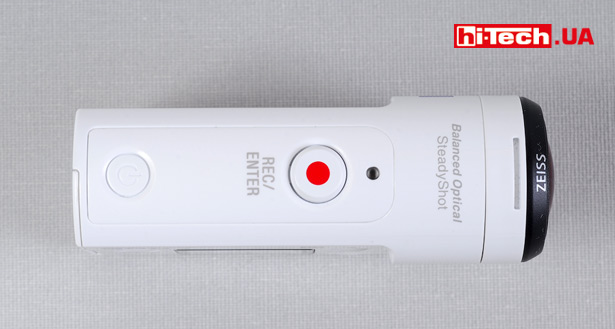
Sony HDR-AS300, like its more advanced twin FDR-X3000, is based on a new sensor (matrix). The matrix size is 1/2.5”. This is smaller than previously available in Sony sports cameras (1/2.3”). But in this case we would not compare the standard sizes directly, since the new sensor has a different aspect ratio of 16:9 (previously 4:3).
The number of effective pixels is 8.2 million. According to the manufacturer, absolutely all the pixels of the matrix are used when shooting. For our part, we note that this is a very important detail that affects the quality of the resulting video image. Even today, not all cameras can boast of such a feature.
Lens aperture F:2.8 is standard for such devices.
Let us remind you again that action cameras do not have an autofocus system! The lens is tightly focused at the hyperfocal distance, which provides the greatest depth of field (DOF). In relation to the Sony HDR-AS300, “everything is sharp” in the frame will be from a distance of approximately 20 cm from the lens to infinity. This is why action cameras are traditionally weak at macro photography.
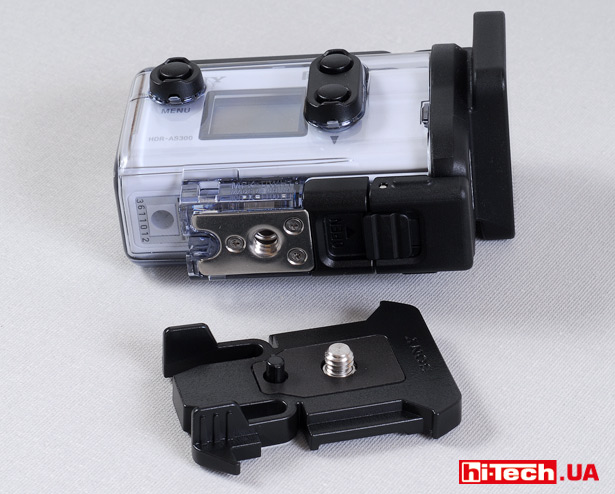
By screwing such an adapter to the Sony HDR-AS300, removal and installation of the camera on some types of mounts can be done in just a second
The Sony HDR-AS300 camera, like other sports cameras, allows you to change the viewing angle within a small range. But this happens not by changing the focal length of the lens, but by “trimming” by using some central part of the light-receiving matrix.
There are modes with equivalent focal lengths of 17mm (wide angle), 23mm (medium angle) and 32mm (narrow angle).
The set of settings related to shooting is quite standard. You can make exposure compensation and select white balance presets, but you cannot manually control the shutter speed when shooting video. There is also no choice of metering mode (matrix metering is used).
There are two color profiles for the image: standard and Vivid. The standard one leaves the picture without excess saturation and contrast and provides good scope for further editing. And when using the second mode, the picture becomes noticeably more saturated, perhaps even somewhat oversaturated. This option is suitable if you want to make the image brighter and richer without further manipulation of color rendering during post-processing.

Comparison of the picture with the standard color rendering setting and with the Vivid setting (right)
There is no special “flat” profile mode like Protune in GoPro.
As stated, the Sony HDR-AS300 does not shoot 4K video. Full HD shooting is available at a maximum speed of 60 (50) fps. Not bad, but you can’t really experiment with slow motion. HD videos can be recorded at up to 120 (100) fps, and 800×480 videos at 240 (200) fps. For Full HD, the XAVC S recording format is also available with an increased bitrate of up to 50 Mb/s.
The camera, of course, can shoot not only video, but also photos. By the way, you can still get 4K video on the Sony HDR-AS300, but it will be “glued together” from photos for Time-lapse video.
And the main “cherry” of the Sony HDR-AS300 is the presence of an optical stabilization system. In theory, it should be much more efficient than electronic systems, can be accessed no matter what shooting resolution is selected, and has virtually no effect on the viewing angle (no cropping).
The manufacturer calls the optical stabilization system used here Balanced Optical SteadyShot (B.O.SS) and emphasizes its special capabilities.
We should note that the stabilization in the Sony HDR-AS300 works really well. It was not possible to make a direct comparison with other models, but having some experience of use, we can notice that the Sony HDR-AS300 simply provides a different level of stabilization. In this parameter, it can easily surpass its competitors.
Great stabilization for an action camera is important.
With the allowance for the fact that it’s a sports camera, we’d call the Sony HDR-AS300’s low-light performance very good. We can assume that in such conditions it shoots at the same level, and maybe even better, than the most advanced models on the market.
The HDR-AS300 lens also demonstrated good proximity protection. When shooting with the sun in the frame, the contrast was almost unaffected, and the level of glare can be called absolutely acceptable.
We did not observe any particularly noticeable artifacts (such as Rolling shutter) associated with line-by-line reading in CMOS sensors while using the camera.
Overall, I was very pleased with the shooting quality of the Sony HDR-AS300. Unless I would like higher recording speeds and 4K video. It is clear that all this is available in the more expensive FDR-X3000 model, but the HDR-AS300 also costs a lot.

Thanks to the built-in GPS receiver in the proprietary Action Cam Movie Creator application, information about speed, trajectory, distance, etc. can be superimposed on the video. You cannot independently change the position of elements on the screen and select a set of desired elements. In total, there are four different skins for displaying GPS information. There are also some third party video editing apps that can also use GPS information
The built-in stereo microphone records decently, but if you want to use a lavalier or some other external microphone, there will be no problems. The case has a standard audio jack.
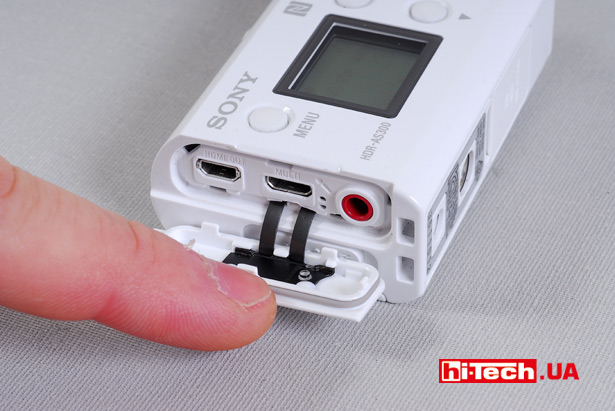
The set of ports on the Sony HDR-AS300 consists of a microHDMI video output, a microUSB connector for charging or connecting to a PC, as well as a standard 3.5 mm mini-jack connector for connecting an external microphone
However, there is an unpleasant nuance associated with sound. Unfortunately, the protective housing of the Sony HDR-AS300 almost completely blocks the passage of sound to the built-in microphone and you will hear practically nothing on the recording. This isn’t always a good thing. When playing paintball, protecting the camera with a housing would be very logical, but you will not get a recording of the surrounding sound environment.
Battery and operating time
The Sony HDR-AS300 uses the same 1240mAh NP-BX1 removable battery as many of its predecessors.
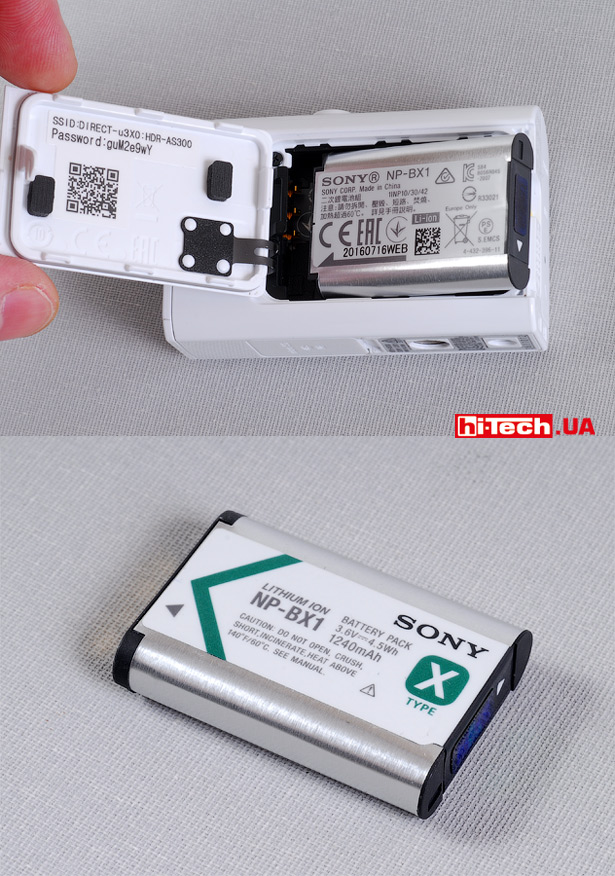
Camera battery life varies greatly depending on the modes selected, whether Wi-Fi and GPS are turned on, how often the HDR-AS300 is in standby mode, etc.
But we prepared a couple of scenarios for the test. In the first case, continuous Full HD video was recorded in a regular format (not XAVC S) with Wi-Fi, Bluetooth and GPS modules disabled. Sony HDR-AS300 managed to work in this mode for 1 hour 54 minutes.
In the second case, continuous Full HD shooting was also carried out, but the format with an increased data flow of XAVC S was selected, Wi-Fi, Bluetooth and GPS modules were activated, and the recorded image was periodically viewed on the remote control screen. In this test, the continuous operation time of the Sony HDR-AS300 was 1 hour 27 minutes.
We believe that the battery life results of the Sony HDR-AS300, while not outstanding, are quite good.
The battery is charged in the camera itself using a microUSB port. If you go on a trip for several days without access to an electrical outlet, you can also easily power the camera from a power bank.
Interestingly, the HDR-AS300 can record while the power source is connected. This way you can shoot for longer than the standard battery allows.
A special docking station is provided to charge the remote control. In this case, a microUSB port is also used.
Conclusions
In terms of capabilities and characteristics, Sony action cameras have been worthy competitors to GoPro cameras for several years now.
In this case, the Sony HDR-AS300 is ready to offer something that you cannot get even in the most sophisticated and modern GoPro cameras. We are talking about an optical, truly effective image stabilization system.
The camera, of course, is not cheap; you must also understand that you will not receive any mounts in the kit. They will need to be purchased separately. But there is no need to compare the Sony HDR-AS300 with numerous products from Chinese masters priced around $100. This device is in a completely different class, and its main competitors are devices from GoPro.
The Sony HDR-AS300 shoots very well. The level of performance of the device itself and accessories is also at its best.
The Sony HDR-AS300 is a good option if you’re interested in Sony’s latest generation of sports cameras and are willing to sacrifice some features, most notably 4K video recording, for a more affordable price compared to the FDR-X3000.
Key characteristics of Sony HDR-AS300
| Matrix size | 1/2.5” |
| Matrix resolution | 8.2 megapixels. |
| Lens aperture | F:2.8 |
| Optical image stabilization | yes |
| Maximum shooting speed in 1080p/720p modes | 60/120 fps |
| Shooting 4K video | no |
| Waterproof box | up to 60 m |
| Wi-Fi/Bluetooth support | yes/yes |
| Built-in GPS module | yes |
| Remote control included | yes (RM-LVR3) |
| Memory card support | microSD, microSDHC, microSDXC, Memory Stick Micro |
| Stock battery capacity | 1240 mAh |
| Dimensions | 29.4x47x83 mm |
| Weight with battery | 109 g |
| Supplier | Sony representative |
| Cost of Sony HDR-AS300 without remote control | $440 |
| Price Sony HDR-AS300 with remote control RM-LVR3 | $565 |
Rating:
+ high quality shooting
+ effective optical image stabilization system
+ excellent remote control included
+ video transmission to the remote control screen
+ ability to record when an external power source is connected
+ high quality workmanship
+ standard connector for connecting an external microphone
+ mounting socket is provided both on the camera and on the box
+ built-in GPS
- the kit does not include a single camera mount
- high price
- does not shoot 4K video
- would like a higher frame rate with Full HD recording
- when using the box, the built-in microphone is almost completely blocked
Read also:
- Dual Pixel RAW technology in the Canon EOS 5D Mark IV camera. Is there any benefit?
- Review of the Fujifilm X-E2S mirrorless camera: when the shooting process is as exciting as the result
Engineer of the Test Laboratory
Don't miss interesting news
Subscribe to our channels and read announcements of high-tech news, tes
Oppo A6 Pro smartphone review: ambitious
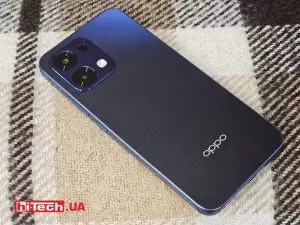
Creating new mid-range smartphones is no easy task. Manufacturers have to balance performance, camera capabilities, displays, and the overall cost impact of each component. How the new Oppo A6 Pro balances these factors is discussed in our review.
Editor’s Choice 2025. Best devices of the year by hi-tech.ua
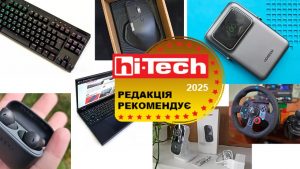
The best gaming laptops, mice for work, gaming keyboards, smartphones, and wireless headphones of 2025. Among them, we will highlight the most interesting ones and those that we can recommend buying.
ASUS ROG release gaming monitor with 5K 180Hz and QHD 330Hz matrix Asus monitor
Asus ROG on the eve of CES 2026 introduced the ROG Strix XG27JCG gaming monitor, which received a dual operating mode and, according to the company, became the first in its class
iRobot has declared bankruptcy business
The American company iRobot, which once made robotic vacuum cleaners a mass product thanks to the Roomba line, has officially declared bankruptcy.





